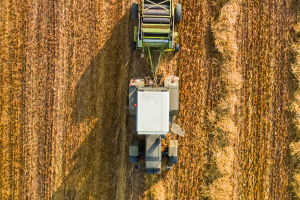Amongst the vast array of avian species that grace the skies, few captivate our imagination like the barn owl.
With its distinctive heart-shaped face, mesmerizing nocturnal behavior, and exceptional hunting prowess, the barn owl stands as a magnificent ambassador of nature's delicate balance. Let’s delve into the fascinating world of the barn owl, exploring its characteristics, habitat, hunting strategies, and the essential role it plays in maintaining ecosystem harmony.
Appearance and Adaptations:
The barn owl is a medium-sized bird, typically measuring around 12 to 15 inches in length, with a wingspan of up to 3.5 feet. One of its most striking features is its unique facial disc, a dish-shaped arrangement of feathers around its eyes, which enhances its hearing capabilities. These keen auditory senses enable the barn owl to pinpoint the faintest sounds produced by its prey, even in complete darkness.
Moreover, the barn owl's feathers possess specialized adaptations for silent flight. Tiny serrations on the leading edges of its wing feathers minimize turbulence, rendering its flight nearly soundless. This attribute allows it to approach its quarry with stealth, making the barn owl one of nature's most proficient nocturnal hunters.
Habitat and Distribution:
The barn owl is a highly adaptable species, found on almost every continent except Antarctica. However, it thrives primarily in open grasslands, agricultural fields, marshes, and sparse woodlands.
Inhabiting a wide range of environments, from temperate to tropical regions, barn owls have successfully adjusted to human-altered landscapes, often nesting in barns, abandoned buildings, and even building steeples.
Behavior and Life Cycle:
Barn owls are solitary creatures, and their nocturnal habits further contribute to their enigmatic allure. As the sun sets, these remarkable birds take to the skies in search of their preferred prey, typically small rodents like mice, voles, and shrews.
Their exceptional night vision and acute hearing allow them to hunt with astonishing precision, silently swooping down on their victims for a swift and efficient kill.
During the breeding season, barn owls form monogamous pairs that often remain loyal for life. Females lay a clutch of four to seven eggs, which are diligently incubated by both parents. After hatching, the parents take turns providing for the offspring, showcasing their commitment to ensuring the survival of their young.
Ecological Importance:
The barn owl serves as a crucial component in its ecosystem, acting as a natural pest control agent. Its diet predominantly consists of rodents, which can be agricultural pests that damage crops and carry diseases.
By preying on these rodent populations, barn owls play a vital role in maintaining ecological balance and protecting crops, reducing the need for harmful chemical pesticides.
Conservation and Threats:
Despite their adaptability, barn owls face significant threats to their survival. Habitat loss due to urbanization and agricultural intensification remains a significant concern, with the destruction of nesting sites impacting their breeding success.
Secondary poisoning from the ingestion of rodents exposed to rodenticides is another significant threat to barn owl populations, as these toxic chemicals can accumulate in their prey.
Conservation efforts to protect the barn owl and its habitats include creating nest boxes in suitable areas and promoting environmentally friendly agricultural practices. Additionally, raising awareness about the importance of these majestic birds and their role in maintaining a balanced ecosystem is essential in ensuring their long-term survival.
The barn owl, with its mysterious nocturnal presence and exceptional hunting abilities, truly stands as the great beast of birds. Its silent flight, heart-shaped face, and captivating behavior make it a symbol of nature's remarkable adaptations and delicate interconnections.


